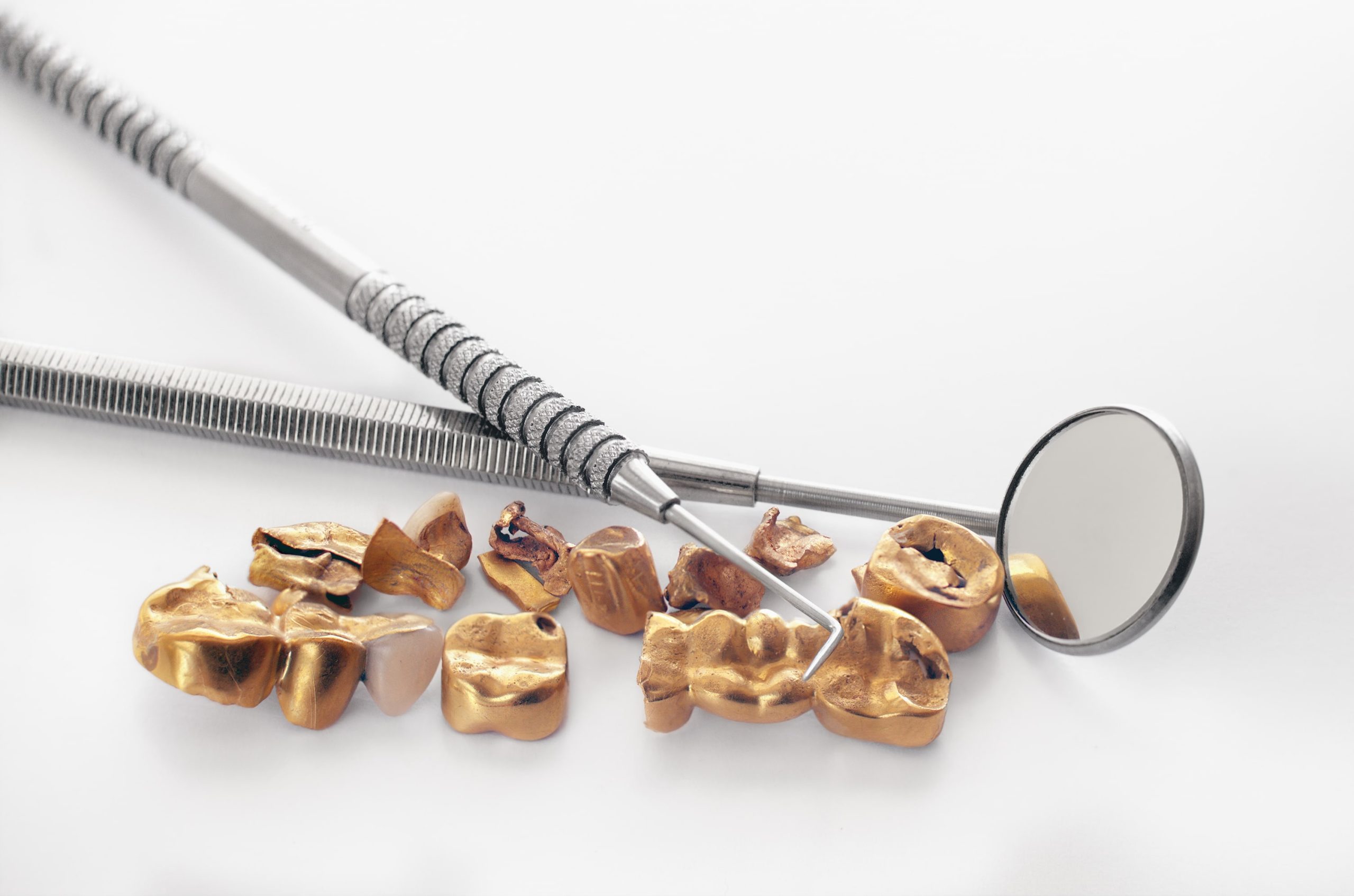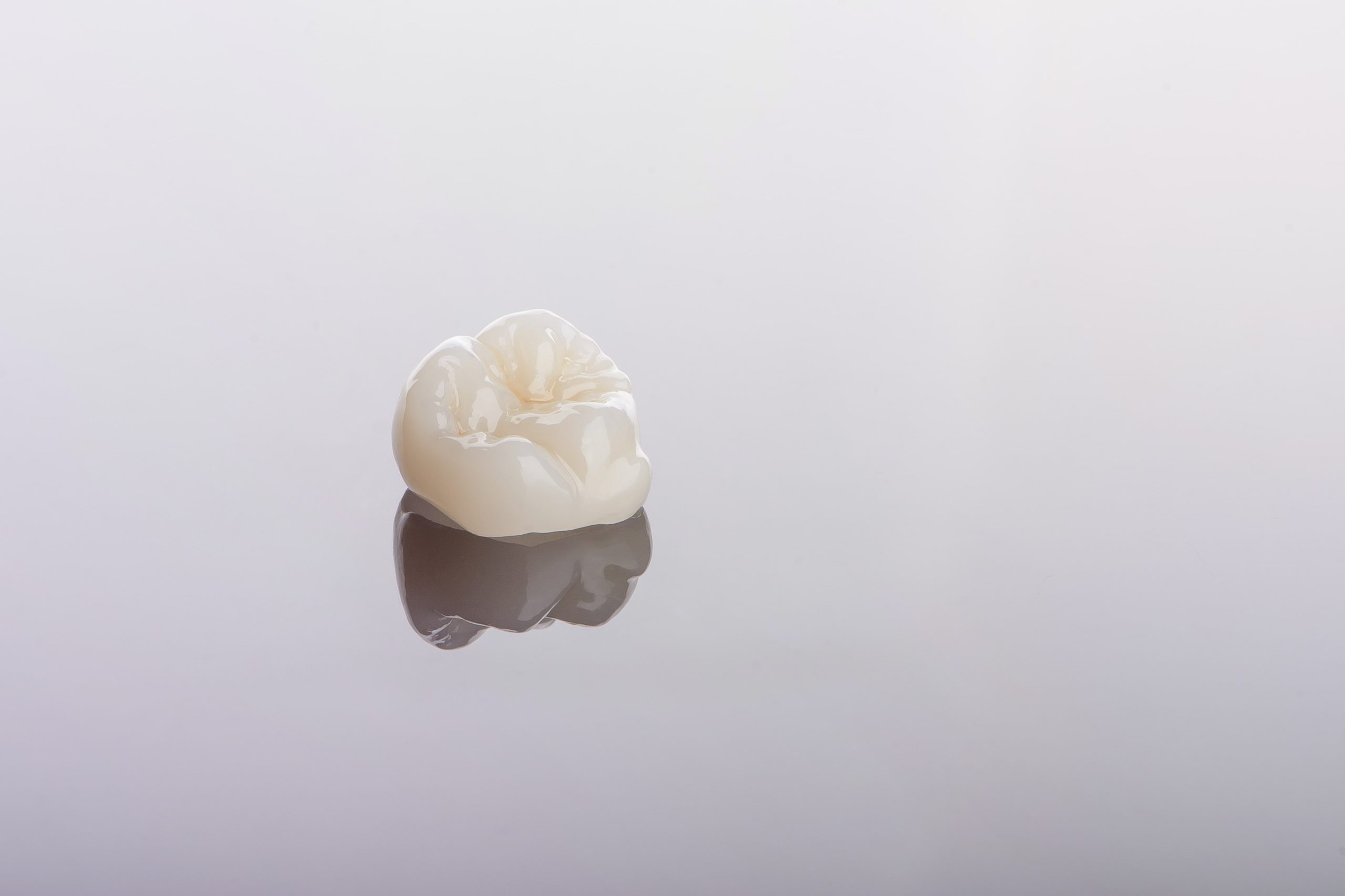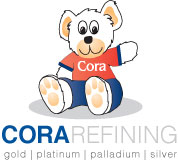For decades, gold was the go-to material for crowns, bridges, and inlays. Its durability, malleability, and biocompatibility made it a trusted choice in dentistry. But over the last 20 years, the landscape of dental materials has changed dramatically. New alloys, ceramics, and composite materials have entered the market—often with less gold or none at all.
For dentists, these changes aren’t just a matter of patient care and aesthetics. They also directly impact the value of your dental scrap and how much you’ll receive from a dental refiner. Here’s what you need to know about the shift in dental alloys and how to protect your practice’s bottom line.

From High-Gold Alloys to Mixed Metals
Traditionally, many crowns and bridges were fabricated from high-noble alloys—meaning at least 60% precious metals (gold, platinum, palladium) with gold content of at least 40%. These restorations were easier to work with, long-lasting, and commanded strong returns when sent to a refiner.
Today, high-gold alloys are becoming less common. Rising precious metal prices, the push for more tooth-colored restorations, and advances in ceramic technology have led labs to use more base-metal alloys or porcelain fused to metal (PFM) restorations with lower noble metal content. Many of these contain only small amounts of precious metals—or none at all.
For dental practices, this means your scrap “looks” the same but may have a vastly different intrinsic value.
Ceramics and Zirconia on the Rise
Aesthetics and patient preferences have driven a rapid adoption of full ceramic and zirconia restorations. These materials are strong, biocompatible, and mimic the look of natural teeth better than metal. However, they contain no precious metals, which means there’s nothing to refine or reclaim at the end of their life cycle.

What This Means for Refining Payouts
Because of these changes, the contents of your dental scrap are more unpredictable than ever. You may have a mixture of:
- High-noble crowns or bridges with substantial gold
- PFM restorations with thin layers of precious metal under ceramic
- Non-noble base metals or full ceramics with zero precious metal
This variability in alloy composition is why refining sales representatives who offer to pay you on the spot for your scrap, can’t possibly know the true value of your scrap. Visual inspection and weight will not result in an accurate payout. The only way to receive the full value for your scrap is to use a refiner that performs an assay on your materials.
How to Maximize Value Despite Changing Alloys
- Collect All Scrap Without Pre-Sorting
Even if a crown “looks” like base metal, it may still contain valuable palladium or other precious metals. Reputable refiners use precise assays to determine content. Sending everything together ensures nothing valuable is accidentally discarded.
- Document Sources When Possible
If you know which lab fabricated a restoration or what alloy was used, keep a note. While not essential, it can help you estimate potential value or spot patterns in your scrap returns.
- Choose a Refiner that Uses Quality Equipment and Techniques
In an era of mixed alloys, accurate testing is more important than ever. Look for a refiner that uses industry-standard techniques—such as fire assay and x-ray fluorescence—and provides a detailed breakdown of precious metal content, not just a lump-sum payout.
- Review Payout History Regularly
Compare the weight, type, and payout from each refining shipment over time. This helps you understand how your practices’ material mix is evolving and can guide decisions about collection or replacement strategies.
Don’t Forget Palladium and Platinum
While gold content is declining, some modern dental alloys include higher proportions of palladium or platinum. These metals are valuable and can significantly boost a refining return—even when gold content is low.
Many dentists overlook these metals because they’re less familiar, but a good refiner will test and pay for all precious metals present, not just gold. Make sure your refining partner includes these metals in your settlement report.
Educating Your Team
Your staff plays a crucial role in collecting and storing scrap. To maximize collection of every ounce of recoverable precious metal, teach your staff to follow the steps outlined below:
- Place all removed crowns, bridges, and grindings in a designated container
- Avoid discarding materials that “look” like base metals
- Keep ceramic-covered restorations intact (don’t chip off porcelain)
Small lapses in your scrap collection procedures—like throwing away a few crowns or sweepings—can add up to hundreds or thousands of dollars lost per year.
Partnering with the Right Refiner
Because dental alloys are evolving, partnering with a refiner experienced in dental scrap is more critical than ever. Cora Refining has specialized in this niche for decades. For every lot, Cora provides clients with a quality experience from start to finish:
- Free shipping and insured containers
- Precise assays to recover and pay for all precious metals present
- Transparent settlement reports, so you know exactly what you’re getting
This level of expertise ensures your practice isn’t leaving money on the table as the market shifts.
The Bottom Line
The era of gold crowns is fading, replaced by a more complex mix of alloys, ceramics, and composites. For dentists, this means your dental scrap isn’t as straightforward as it once was.
By understanding these trends, collecting materials diligently, and working with a refiner that tests and pays for every precious metal, you can still maximize your refining payouts—even as the materials in dentistry evolve.
Want to see how much your dental scrap is really worth today? Contact Cora Refining for a free, insured collection kit and a transparent assay report on your next shipment.

